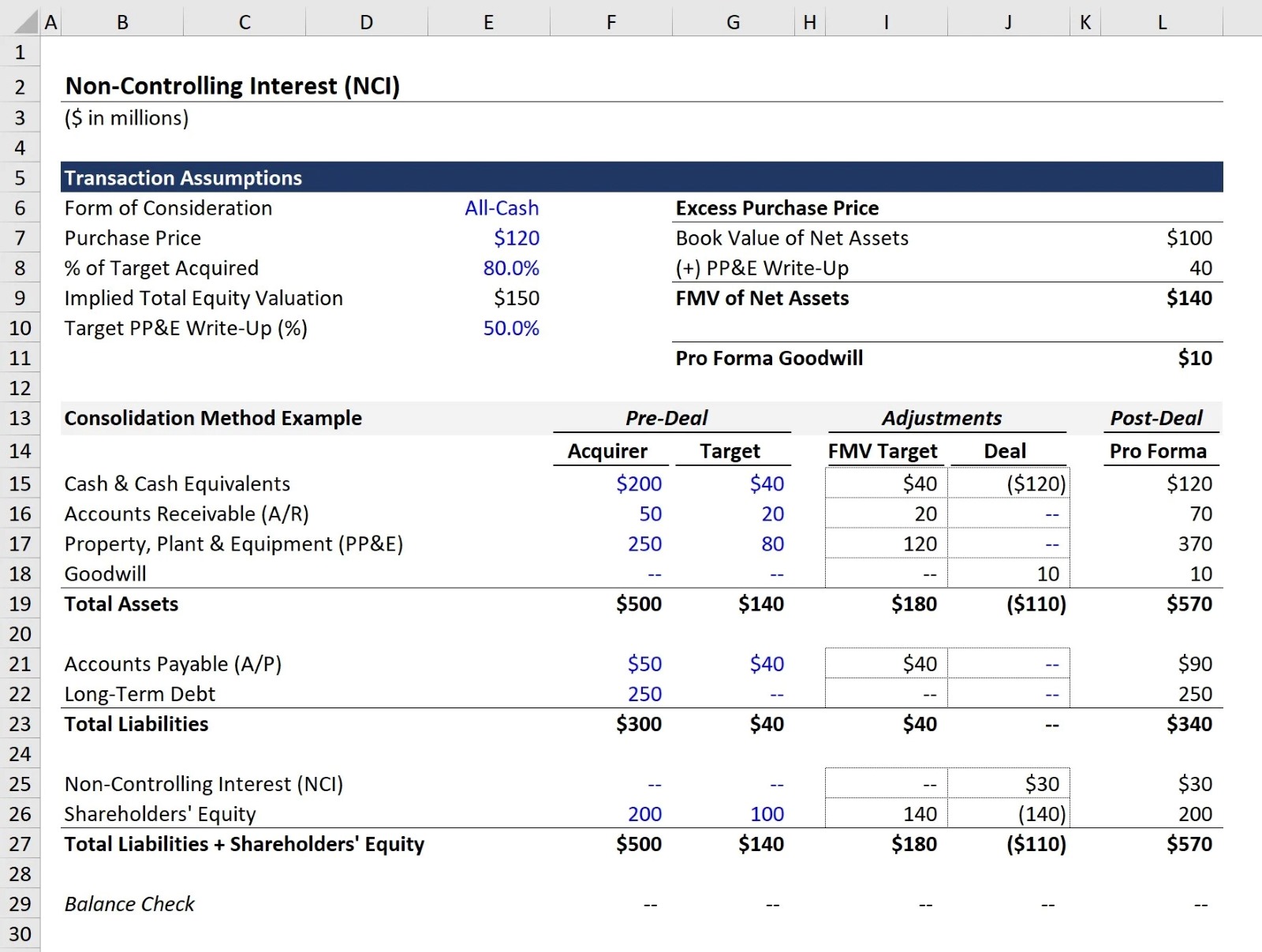

Finance
What Is Controlled Business In Insurance?
Published: November 15, 2023
Learn about controlled business in insurance and its impact on finance. Understand the regulations and implications of controlled business for insurance companies and consumers.
(Many of the links in this article redirect to a specific reviewed product. Your purchase of these products through affiliate links helps to generate commission for LiveWell, at no extra cost. Learn more)
Table of Contents
- Definition of Controlled Business in Insurance
- Regulatory Overview of Controlled Business
- Restrictions and Guidelines for Controlled Business
- Types of Controlled Business in Insurance
- Benefits and Drawbacks of Controlled Business
- Case Studies on Controlled Business in Insurance
- Future Outlook for Controlled Business in Insurance
- Conclusion
Definition of Controlled Business in Insurance
Controlled business in insurance refers to the practice where insurance companies or agents have a financial interest, ownership, or control over a particular business entity that is involved in the sale, procurement, or provision of insurance products. Essentially, it involves a close relationship between the insurer and the business entity, which can range from direct ownership to financial control or influence.
Controlled business arrangements are subject to various regulations and guidelines imposed by insurance regulatory bodies to ensure transparency, fairness, and consumer protection. These regulations are designed to prevent conflicts of interest and maintain the integrity of the insurance market.
Controlled business can take many forms, including but not limited to:
- Wholly-owned subsidiaries: Insurance companies may establish wholly-owned subsidiaries to handle specific lines of business, such as life insurance, health insurance, or property and casualty insurance. These subsidiaries are controlled by the parent company and operate under its regulatory oversight.
- Agent-owned businesses: Insurance agents or brokers sometimes create separate business entities to sell insurance products. In this setup, the agents have a financial stake in the entity and may steer customers towards products from specific insurers in which they have an ownership interest.
- Joint ventures: Insurance companies may enter into joint ventures with other businesses, such as banks or retail chains, to offer insurance products to customers. In these partnerships, both parties have a degree of control and financial interest in the venture.
The primary objective of controlled business arrangements is to streamline operations, provide cross-selling opportunities, and improve market presence. By exerting control over affiliated businesses, insurers can potentially gain a competitive advantage and expand their market share.
However, while controlled business arrangements can offer benefits, they also pose inherent risks. Regulatory bodies work diligently to mitigate these risks and ensure that the interests of policyholders are protected.
Regulatory Overview of Controlled Business
The regulation of controlled business in the insurance industry is crucial to maintain fair competition, protect policyholders, and prevent conflicts of interest. Regulatory bodies, such as insurance commissions or departments, enforce guidelines and restrictions to ensure transparency and integrity within the industry.
Insurance regulators have the authority to scrutinize and monitor controlled business arrangements to prevent any practices that may harm consumers or distort the market. They establish rules that govern the relationships between insurers and the affiliated businesses under their control.
One common regulatory requirement is the disclosure of controlled business arrangements. Insurance companies are typically obligated to disclose their ownership interests or control over any relevant business entities. This disclosure helps policyholders and consumers make informed decisions when purchasing insurance products, as they are made aware of any potential conflicts of interest.
Regulatory bodies also set limits on the percentage of controlled business that an insurer can engage in. These limits vary across jurisdictions and depend on the specific regulatory framework in place. The aim is to prevent insurers from exerting excessive control over the market, which could lead to anticompetitive practices or harm the interests of policyholders.
Additionally, there are regulations surrounding the compensation structure for agents or brokers involved in controlled business arrangements. Regulators generally require transparency and fair treatment when it comes to compensation, ensuring that agents do not prioritize their financial interests over the best interests of the policyholders.
Moreover, insurance regulators may conduct audits or examinations to review the operations and transactions within controlled business entities. These examinations verify compliance with regulatory guidelines, detect any potential breaches, and assess the overall financial stability and solvency of the insurance companies involved.
Overall, the regulatory oversight of controlled business in insurance aims to maintain a level playing field, protect consumers, and uphold the integrity of the insurance market. By setting and enforcing guidelines, regulators strive to strike a balance between allowing insurers to engage in controlled business arrangements and ensuring the fair treatment of policyholders.
Restrictions and Guidelines for Controlled Business
Controlled business arrangements in the insurance industry are subject to a range of restrictions and guidelines imposed by regulatory bodies. These measures are put in place to prevent conflicts of interest, maintain fair competition, and protect the interests of policyholders.
One key restriction is the requirement for insurers to disclose their controlled business relationships. Insurance companies must provide clear and transparent information to policyholders regarding any financial interests or control they have over affiliated businesses. This disclosure allows consumers to make informed decisions and understand any potential biases or conflicts of interest that may exist.
Regulatory bodies also impose limits on the extent to which an insurer can engage in controlled business activities. These limits vary depending on the jurisdiction and aim to prevent insurers from exerting excessive control over the market. By setting these limits, regulators ensure that there is a healthy level of competition and that policyholders have access to a diverse range of insurance products and providers.
Another guideline commonly imposed is the requirement for insurers to treat their controlled business entities and non-controlled entities equally. This means that insurers must avoid giving preferential treatment or unfair advantages to their affiliated businesses. Fair competition must be maintained, and policyholders should have equal access and treatment regardless of the insurer’s controlled business relationships.
Compensation arrangements for agents or brokers involved in controlled business arrangements are also closely regulated. Regulatory bodies establish guidelines to ensure that compensation structures are transparent, fair, and aligned with the best interests of policyholders. Agents must not prioritize their own financial gain over the best interests of the customers they serve.
Additionally, regulatory bodies conduct audits and examinations to ensure compliance with restrictions and guidelines for controlled business. These audits help identify potential conflicts of interest, detect any breaches of regulations, and assess the overall financial stability and solvency of the entities involved. By conducting these examinations, regulators can take appropriate actions to address any issues and protect the interests of policyholders.
Overall, the restrictions and guidelines for controlled business in the insurance industry are in place to promote transparency, fair competition, and consumer protection. By enforcing these measures, regulatory bodies work to safeguard the integrity of the insurance market and ensure that policyholders are treated fairly and given access to a diverse range of insurance options.
Types of Controlled Business in Insurance
Controlled business in the insurance industry can take various forms, depending on the relationships and arrangements between insurers and affiliated entities. These types of controlled business arrangements include:
- Wholly-owned subsidiaries: Insurance companies may establish wholly-owned subsidiaries to handle specific lines of business. These subsidiaries operate under the direct control and ownership of the parent company. For example, an insurance company may create a wholly-owned subsidiary to focus on life insurance products or property and casualty insurance.
- Agent-owned businesses: In this type of controlled business arrangement, insurance agents or brokers create separate business entities to sell insurance products. These businesses are partially or wholly owned by the agents themselves. Agents who have ownership stakes in these entities may prioritize selling insurance policies from their affiliated insurers or steer customers towards specific products.
- Joint ventures: Insurance companies often form partnerships or joint ventures with other businesses to offer insurance products. These joint ventures involve shared ownership and control between the insurance company and the partnering business entity. For instance, an insurer might team up with a bank to provide insurance products to bank customers.
- Preferred provider networks: Some insurers establish networks comprised of healthcare providers, such as doctors and hospitals. These networks are often controlled or owned by the insurer and are designed to provide policyholders with access to a specific group of healthcare providers at discounted rates.
- Captive insurance: Captive insurance involves the creation of a separate insurance company by a parent company to cover its own risks. This form of controlled business allows the parent company to have more control over its insurance policies and claims management.
These types of controlled business arrangements enable insurers to streamline their operations, expand their market reach, and gain a competitive edge. However, they also raise potential concerns regarding conflicts of interest, fair competition, and consumer protection. Regulatory bodies closely monitor and regulate these arrangements to safeguard the interests of policyholders and maintain the integrity of the insurance market.
Benefits and Drawbacks of Controlled Business
Controlled business arrangements in the insurance industry offer certain benefits, but they also come with drawbacks that need to be considered. Understanding these advantages and disadvantages is crucial for both insurance companies and consumers:
Benefits of Controlled Business:
- Streamlined operations: Controlled business arrangements allow insurers to integrate and streamline their operations with affiliated entities. This can lead to improved efficiency, coordinated underwriting processes, and better customer service.
- Market expansion: By establishing controlled business entities or entering into partnerships, insurers can expand their market presence and reach a broader customer base. This can result in increased sales opportunities and revenue growth.
- Cross-selling opportunities: Controlled business arrangements provide insurers with the ability to cross-sell insurance products to customers of affiliated businesses. For example, an insurer involved in a joint venture with a bank can offer insurance products to the bank’s customers, resulting in increased sales.
- Brand synergy: Controlled business arrangements can create brand synergy and reinforce the brand image of both the insurer and the affiliated entity. This can enhance consumer perception and trust in the insurance products offered.
Drawbacks of Controlled Business:
- Conflict of interest: Controlled business arrangements can potentially create conflicts of interest. Insurers may prioritize selling policies from their affiliated entities, even if they are not the most suitable for the policyholders. This can undermine the principle of unbiased advice and fair competition.
- Reduced consumer choice: Controlled business arrangements may limit consumer choice by steering customers towards specific insurance products or providers. This can restrict the availability of competitive options and potentially lead to higher prices for consumers.
- Anticompetitive practices: If insurers have significant control over the market through their affiliated entities, it can lead to anticompetitive practices. This may include price fixing, market manipulation, or limiting market access for other insurers.
- Regulatory scrutiny: Regulators closely monitor controlled business arrangements to ensure compliance with regulations and prevent abuses. This can result in increased regulatory oversight, audits, and potential penalties for non-compliance.
It is essential for insurance companies to weigh the benefits and drawbacks of controlled business arrangements carefully. They must implement measures to mitigate conflicts of interest, ensure market competition, and prioritize the best interests of policyholders. Similarly, consumers should evaluate their options and consider any possible biases when purchasing insurance products within a controlled business arrangement.
Case Studies on Controlled Business in Insurance
To illustrate the practical implications of controlled business arrangements in the insurance industry, let’s examine a couple of case studies:
Case Study 1: Wholly-owned Subsidiary
Insurance Company A, a major player in the market, establishes a wholly-owned subsidiary to handle its life insurance line of business. The subsidiary operates under the direct control and ownership of Insurance Company A, allowing for streamlined operations and focused expertise in life insurance products.
By leveraging the subsidiary’s specialized knowledge and resources, Insurance Company A can offer tailored life insurance policies to its customers. The arrangement also enables the parent company to maintain a higher level of oversight and control over underwriting practices and claims management.
This case study demonstrates the benefits of a wholly-owned subsidiary, including operational efficiency, improved product offerings, and centralized control. However, it is essential for Insurance Company A to ensure transparency and avoid any potential conflicts of interest that may arise from its ownership of the subsidiary.
Case Study 2: Agent-Owned Business
In this case, Insurance Agent B forms a separate business entity to sell insurance products. Agent B has partial ownership of the entity and exclusively promotes insurance policies from Insurer C, with whom the agent has a controlled business relationship.
While Agent B benefits from the financial rewards of the controlled business arrangement, there is a risk of potential bias towards Insurer C’s products, potentially limiting consumer choice. Policyholders might not be aware of the agent’s affiliation and may unknowingly be steered towards a specific insurer without considering other suitable options.
This case study highlights the need for transparency and disclosure in agent-owned businesses. Both Agent B and Insurer C must ensure that policyholders are fully informed about the controlled business relationship and are provided with a fair and unbiased selection of insurance products.
These case studies demonstrate how controlled business arrangements can impact the insurance industry. It is crucial for both insurers and regulators to monitor and address any potential conflicts of interest, maintain fair competition, and uphold consumer protection.
Future Outlook for Controlled Business in Insurance
The future outlook for controlled business in the insurance industry is shaped by evolving market dynamics, technological advancements, and regulatory developments. Here are some key factors that may influence the future of controlled business:
Increased Regulatory Scrutiny: As industries become more interconnected, regulatory bodies are expected to heighten their scrutiny of controlled business arrangements. The focus will likely be on ensuring fair competition, transparency, and consumer protection. Regulators may introduce stricter guidelines and regulations to address potential conflicts of interest and maintain a level playing field within the industry.
Technological Innovations: Rapid advancements in technology, such as artificial intelligence, big data analytics, and blockchain, are revolutionizing the insurance industry. These technological advancements have the potential to disrupt traditional business models, including controlled business arrangements. Companies may explore new ways to deliver insurance products and services, leading to changes in the landscape of controlled business.
Shift in Customer Expectations: Customers’ expectations of the insurance industry are evolving. They seek personalized and accessible insurance products, streamlined processes, and convenient services. This shift in customer expectations may influence how controlled business arrangements are structured, with a greater focus on delivering customer-centric solutions that cater to individual needs and preferences.
Emerging Business Models: Insurance companies and entrepreneurs are constantly exploring new business models to adapt to changing market dynamics. This includes innovative platforms, partnerships, and collaborations that can potentially reshape the controlled business landscape. Insurers may partner with InsurTech startups, venture into new sectors, or explore alternative distribution channels to reach a wider customer base.
Global Harmonization of Regulations: With increased globalization, there is a growing need for harmonization of regulations across jurisdictions. Standardizing rules and guidelines for controlled business arrangements can create a more consistent and efficient regulatory framework globally. This harmonization can enhance cross-border collaboration and level the playing field for insurers operating in different markets.
While controlled business arrangements will continue to exist in the insurance industry, they may undergo significant transformations to adapt to changing market conditions and regulatory demands. Insurers must navigate these changes while ensuring transparency, consumer protection, and maintaining fair competition. Likewise, regulatory bodies must stay proactive to address potential risks and challenges associated with controlled business arrangements.
Conclusion
Controlled business in the insurance industry plays a significant role in shaping the market landscape. It involves insurers having financial interests, control, or ownership over affiliated entities engaged in the sale or provision of insurance products. While these arrangements offer certain benefits, they also raise concerns regarding conflicts of interest, consumer choice, and fair competition.
Regulatory bodies closely monitor and enforce guidelines to ensure transparency, protect policyholders, and maintain the integrity of the insurance market. They impose restrictions on the extent of controlled business activity and require insurers to disclose their affiliations to promote informed decision-making by consumers.
Types of controlled business in insurance include wholly-owned subsidiaries, agent-owned businesses, joint ventures, preferred provider networks, and captive insurance. Each arrangement presents unique opportunities and challenges for insurers and customers alike.
Controlled business arrangements offer benefits such as streamlined operations, expanded market reach, cross-selling opportunities, and brand synergy. However, they must be carefully managed to avoid conflicts of interest, anticompetitive practices, and reduced consumer choice.
The future outlook for controlled business in the insurance industry will be shaped by factors such as increased regulatory scrutiny, technological advancements, customer expectations, emerging business models, and global harmonization of regulations. Insurers need to adapt to these evolving dynamics while prioritizing transparency, consumer protection, and fair competition.
In conclusion, controlled business arrangements have a significant impact on the insurance industry. It is crucial for insurers, regulators, and consumers to navigate these arrangements with a balanced approach, ensuring transparency, fairness, and the best interests of policyholders are upheld. By doing so, the insurance industry can continue to evolve and meet the changing needs of customers while maintaining a competitive and ethical marketplace.














